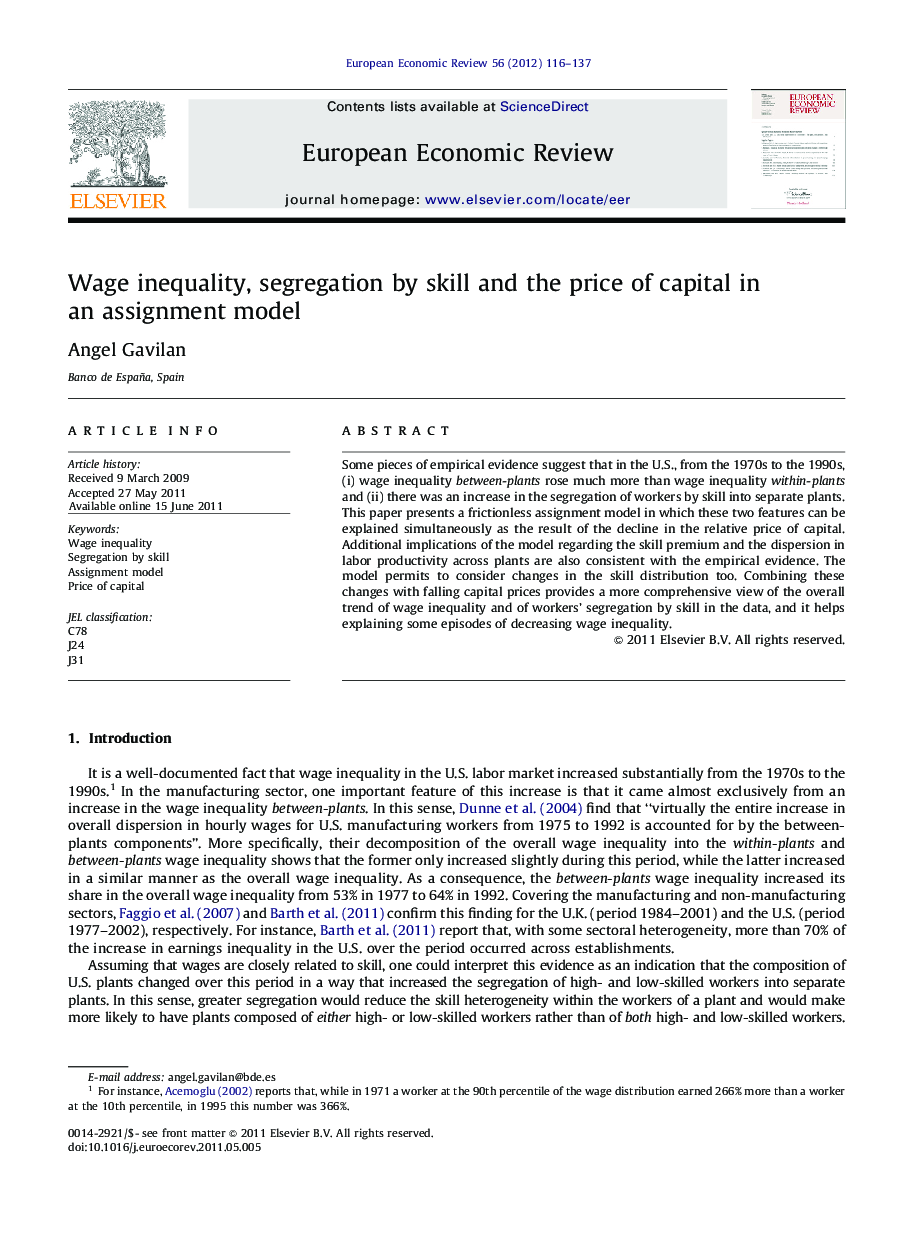| Article ID | Journal | Published Year | Pages | File Type |
|---|---|---|---|---|
| 5066999 | European Economic Review | 2012 | 22 Pages |
Some pieces of empirical evidence suggest that in the U.S., from the 1970s to the 1990s, (i) wage inequality between-plants rose much more than wage inequality within-plants and (ii) there was an increase in the segregation of workers by skill into separate plants. This paper presents a frictionless assignment model in which these two features can be explained simultaneously as the result of the decline in the relative price of capital. Additional implications of the model regarding the skill premium and the dispersion in labor productivity across plants are also consistent with the empirical evidence. The model permits to consider changes in the skill distribution too. Combining these changes with falling capital prices provides a more comprehensive view of the overall trend of wage inequality and of workers' segregation by skill in the data, and it helps explaining some episodes of decreasing wage inequality.
âºBetween-plants wage inequality rose greatly in the U.S. from the 1970s to the 1990s. âºEvidence also points to a rise in workers' segregation by skill into separate plants. ⺠This paper presents a frictionless assignment model consistent with these facts. ⺠In the model, they can be explained by the observed decline in the price of capital.
